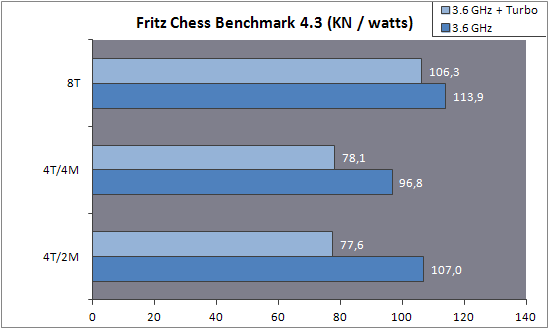That's fine (except your wording is inaccurate). Somehow we should trick it to use this method for BD, as well...
It depends on if the penalty of forcing those closely related threads to communicate through L3 (instead of L2) is more or less than the gain on the lack of sharing resources. It seems most applications only benefits from it:
Attachment 121261
So, there could be a little patch that simply enables scheduling a' la SMT in Win7, that it already supports (if true)...
Quoted from the article:
And so the default behaviour will be separation (contrary to what JF said all along)? Would be just stupid if not... Of course, power consumption is higher because more modules are active, but
here we can see also that with turbo enabled the the energy efficiency is really the same...
Well, unless there is a fix coming (HW or SW or both) that largely improves on the penalty of sharing resoruces. Just because the current numbers are much worse (anywhere between 95% to 160%, with one case of 180%) than what they've propagated (180% across the board), and so one can think there is some flaw somewhere here, as well. (And there is indeed the case of L1D trashing, that they claim to be responsible for only 3% decrease.)
What diagram? Do you mean
this? Which part of it?
Do you mean, if we disable every other "core" in the BIOS? Then no, you will get this:
Core (Module) 0 - one cluster
Core (Module) 1 - one cluster
Core (Module) 2 - one cluster
Core (Module) 3 - one cluster
ps. perhaps the title of the thread should be changed to "Thread separation vs. turbo", or something like that, to be more meaningful.






 Reply With Quote
Reply With Quote








Bookmarks